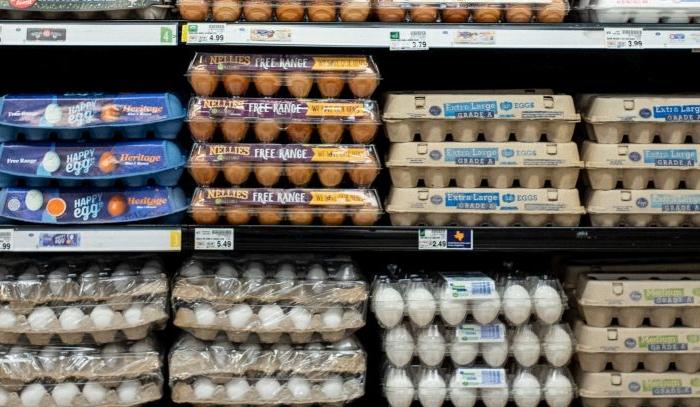Online grocery prices continued to rise by double-digits in March, as inflation continues to bite.
Adobe analyzed 1 trillion visits to retail sites and more than 100 million items across 18 product categories to track price changes.
There was a 0.4 percent rise in the growth of food prices from February, which had been slowing since their height last September, when they hit a record 14.3 percent year-over-year increase.
Hit With Persistent Inflation
Online food prices are expected to grow more slowly in 2023 compared to the previous year, but still above historical averages, according to Adobe.The category expected to see the largest surge in prices is eggs, which saw an estimated rise of 29.6 percent, after taking into consideration the volatility of the industry.
Costs are expected to rise for poultry by 3.4 percent, dairy products by 6.4 percent, fats and oils by 15.4 percent, processed fruits and vegetables by 11.4 percent, sugar based products by 11.1 percent, cereals and bakery products by 11.7 percent, nonalcoholic beverages by 10.7 percent, and other foods by 8.5 percent.
Meanwhile, beef and veal prices are predicted to decrease by 1.0 percent in 2023, while pork prices would fall by 0.8 percent.
Fresh fruit and vegetable prices are projected to see continuous growth by the end of the year, with fruit to grow by 0.6 percent and vegetables by 1.3 percent.
Despite persistent inflation, customers are still buying groceries online, with Adobe reporting last month the biggest jump in sales for that category last year, with spending rising by 10.8 percent, to $86.8 billion.
It notes that the COVID-19 pandemic made consumers more habitually used to shopping online for non-food grocery categories “to a greater extent” than food.
Prices Ease Overall
Overall U.S. online prices dropped 1.7 percent in March from a year earlier, for the seventh straight decline, showing more a competitive selling environment for online merchants in recent months.On a monthly basis, online prices in March remained flat with a 0.03 percent increase.
Rising grocery prices did have an impact on persistent inflation, as consumers spent more on services.
The overall decline in prices was driven by sharp drops in discretionary categories like electronics, toys, and gifts.
Electronics prices fell 12 percent year-over-year, while flowers and related gifts were down 24.3 percent, toys were down 6.6 percent, and appliances saw a 4.9 percent drop.
Apparel, personal care items, office supplies, pet products, non-prescription drugs, tools and home improvement, and medical related items all saw an increase.
Apparel prices were up 6.6 percent year-over-year from February, when it rose 5.1 percent, but apparel inflation has since slowed significantly since its double-digit peak from 2021 to 2022.
The National Retail Federation predicted that retail sales would grow between 4 and 6 percent in 2023, despite high inflation, and that retail sales would reach between $5.13 and $5.23 trillion this year in total.





